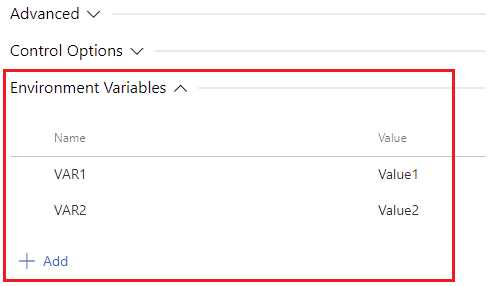任务类型和使用情况
Azure DevOps Services | Azure DevOps Server 2022 - Azure DevOps Server 2019
任务会在流水线中执行一项操作,该操作是已通过一组输入进行提取的打包脚本或过程。 任务是用于在管道中定义自动化的构建基块。
运行作业时,所有任务都按顺序逐一运行。 若要在多个代理上并行运行同一组任务,或者在不使用代理的情况下运行某些任务,请参阅作业。
默认情况下,所有任务都在同一上下文中运行,无论是在主机上,还是在作业容器中。
你可以选择使用步骤目标来控制单个任务的上下文。
详细了解如何使用内置任务为任务指定属性。
要详细了解任务支持的常规属性,请参阅 steps.task 的 YAML 参考。
自定义任务
Azure DevOps 包括内置任务,以实现基本的生成和部署方案。 你也可以创建自己的自定义任务。
此外,Visual Studio Marketplace 提供了许多扩展:每个扩展在安装到订阅或集合时,都会使用一个或多个任务来扩展任务目录。 你还可以编写自己的自定义扩展,以便将任务添加到 Azure Pipelines。
在 YAML 管道中,可以按名称引用任务。 如果一个名称同时符合内置任务和自定义任务,则内置任务优先。 可以对自定义任务使用任务 GUID 或完全限定名称来避免此风险:
steps:
- task: myPublisherId.myExtensionId.myContributionId.myTaskName@1 #format example
- task: qetza.replacetokens.replacetokens-task.replacetokens@3 #working example
若要查找 myPublisherId 和 myExtensionId,请在市场中针对任务选择获取。 URL 字符串中 itemName 后面的值是 myPublisherId 和 myExtensionId。 还可以通过将任务添加到发布管道并在编辑任务时选择查看 YAMLA 来查找完全限定名称。
任务版本
任务将进行版本控制,因此你必须指定管道中使用的任务的主版本。 这有助于防止发布新版本的任务时出现问题。 任务通常向后兼容,但在某些情况下,当任务自动更新时,可能会遇到不可预知的错误。
当新的次版本发布时(例如从 1.2 到 1.3),管道会自动使用新版本。 但如果发布了新的主版本(例如 2.0),则管道将继续使用指定的主版本,直到你编辑管道并手动更改为新的主版本。 日志中将包含有新的主版本可用的提示。
可以通过在 @ 符号后指定任务的完整版本号来设置要使用的次要版本(例如:GoTool@0.3.1)。 只能使用你的组织中存在的任务版本。
在 YAML 中,可在任务名称中使用 @ 指定主版本。
例如,要固定为 PublishTestResults 任务的版本 2:
steps:
- task: PublishTestResults@2
YAML 管道在 TFS 中不可用。
任务控制选项
每个任务都提供一些控制选项。
控件选项可用作 task 部分中的键。
- task: string # Required as first property. Name of the task to run.
inputs: # Inputs for the task.
string: string # Name/value pairs
condition: string # Evaluate this condition expression to determine whether to run this task.
continueOnError: boolean # Continue running even on failure?
displayName: string # Human-readable name for the task.
enabled: boolean # Run this task when the job runs?
env: # Variables to map into the process's environment.
string: string # Name/value pairs
name: string # ID of the step.
timeoutInMinutes: string # Time to wait for this task to complete before the server kills it.
控件选项可用作 task 部分中的键。
- task: string # Required as first property. Name of the task to run.
inputs: # Inputs for the task.
string: string # Name/value pairs
condition: string # Evaluate this condition expression to determine whether to run this task.
continueOnError: boolean # Continue running even on failure?
displayName: string # Human-readable name for the task.
target: string | target # Environment in which to run this task.
enabled: boolean # Run this task when the job runs?
env: # Variables to map into the process's environment.
string: string # Name/value pairs
name: string # ID of the step.
timeoutInMinutes: string # Time to wait for this task to complete before the server kills it.
retryCountOnTaskFailure: string # Number of retries if the task fails.
控件选项可用作 task 部分中的键。
- task: string # Required as first property. Name of the task to run.
inputs: # Inputs for the task.
string: string # Name/value pairs
condition: string # Evaluate this condition expression to determine whether to run this task.
continueOnError: boolean # Continue running even on failure?
displayName: string # Human-readable name for the task.
target: string | target # Environment in which to run this task.
enabled: boolean # Run this task when the job runs?
env: # Variables to map into the process's environment.
string: string # Name/value pairs
name: string # ID of the step.
timeoutInMinutes: string # Time to wait for this task to complete before the server kills it.
retryCountOnTaskFailure: string # Number of retries if the task fails.
注意
给定的任务或作业无法单方面决定作业/阶段是否继续。 它可以执行的操作是提供成功或失败的状态,每个下游任务/作业都有一个条件计算,条件计算结果决定了是否运行下游任务/作业。 默认条件,即“如果我们处于成功状态,则运行”。
出错时继续会以一种微妙的方式改变这一点。 为了做出这种决策,此条件实际上是“欺骗”了所有下游步骤/作业,将任何结果视为“成功”。 换句话说,此条件的意思是“当你决定有关包含结构的条件时,不要考虑此任务的失败”。
超时期限从任务开始运行时开始。 不包括任务排队或等待代理的时间。
注意
除了任务级别超时之外,管道还可指定任务级别超时。 如果作业级别超时间隔在步骤完成之前已过,则运行作业将终止,即使步骤配置了更长的超时间隔。 有关详细信息,请参阅超时。
在此 YAML 中,即使前一步因 succeededOrFailed() condition 而失败,PublishTestResults@2 也会运行。
steps:
- task: UsePythonVersion@0
inputs:
versionSpec: '3.x'
architecture: 'x64'
- task: PublishTestResults@2
inputs:
testResultsFiles: "**/TEST-*.xml"
condition: succeededOrFailed()
条件
仅当具有相同代理池的所有以前的直接和间接依赖项都成功时。 如果代理池不同,这些阶段或作业会同时运行。 如果未在 YAML 中设置任何条件,则此条件为默认值。
即使以前的依赖项失败,除非取消运行。 将 YAML 中的
succeededOrFailed()用于此条件。即使以前的依赖项失败,即使已取消运行也是如此。 将 YAML 中的
always()用于此条件。仅当以前的依赖项失败时。 将 YAML 中的
failed()用于此条件。
步骤目标
任务在执行上下文中运行,所谓的执行上下文是指代理主机或容器。
单个步骤可通过指定 target 来覆盖其上下文。
可用选项是 host,以代理主机以及管道中定义的任何容器为目标。
例如:
resources:
containers:
- container: pycontainer
image: python:3.11
steps:
- task: SampleTask@1
target: host
- task: AnotherTask@1
target: pycontainer
在这里,SampleTask 在主机上运行,AnotherTask 在容器中运行。
任务失败后的重试次数
使用 retryCountOnTaskFailure 可指定任务失败时的重试次数。 默认值为零。 有关任务属性的详细信息,请参阅 YAML 架构中的 steps.task。
- task: <name of task>
retryCountOnTaskFailure: <max number of retries>
...
注意
- 需要代理版本 2.194.0 或更高版本。 不支持无代理任务。
- 失败的任务重试时间(以秒为单位)。 每次尝试失败后,每次重试之间的等待时间都会增加。
- 对于任务的幂等性,不做任何假设。 如果任务具有副作用(例如,如果任务部分创建了外部资源),则可能会在第二次运行时失败。
- 没有为任务提供关于重试次数的信息。
- 系统会向任务日志添加一条警告,指示它在重试之前已失败。
- 所有重试任务尝试都作为同一任务节点的一部分显示在 UI 中。
YAML 管道在 TFS 中不可用。
环境变量
每个任务都有一个 env 属性,该属性是表示映射到任务进程的环境变量的字符串对列表。
task: AzureCLI@2
displayName: Azure CLI
inputs: # Specific to each task
env:
ENV_VARIABLE_NAME: value
ENV_VARIABLE_NAME2: value
...
以下示例运行 script 步骤(,此步骤是命令行任务的快捷方式,后跟等效的任务语法。 此示例向 AZURE_DEVOPS_EXT_PAT 环境变量分配一个值,用于通过 Azure DevOps CLI 进行身份验证。
# Using the script shortcut syntax
- script: az pipelines variable-group list --output table
env:
AZURE_DEVOPS_EXT_PAT: $(System.AccessToken)
displayName: 'List variable groups using the script step'
# Using the task syntax
- task: CmdLine@2
inputs:
script: az pipelines variable-group list --output table
env:
AZURE_DEVOPS_EXT_PAT: $(System.AccessToken)
displayName: 'List variable groups using the command line task'
生成工具安装程序 (Azure Pipelines)
工具安装程序使生成管道能够安装和控制依赖项。 具体而言,你可以:
针对 CI 生成,即时安装工具或运行时(即使是在 Microsoft 托管的代理上)。
针对依赖项的多个版本(例如 Node.js)验证应用或库。
例如,可以设置生成管道,以便针对多个版本的 Node.js 运行和验证应用。
示例:在多个版本的 Node.js 上测试和验证应用
在项目的基目录中创建包含以下内容的 azure-pipelines.yml 文件。
pool:
vmImage: ubuntu-latest
steps:
# Node install
- task: UseNode@1
displayName: Node install
inputs:
version: '16.x' # The version we're installing
# Write the installed version to the command line
- script: which node
创建新的生成管道并运行此管道。 观察生成的运行情况。 Node.js 工具安装程序可下载 Node.js 版本(如果尚未安装在代理上)。 命令行脚本可记录 Node.js 版本在磁盘上的位置。
YAML 管道在 TFS 中不可用。
工具安装程序任务
有关工具安装程序任务的列表,请参阅工具安装程序任务。
相关文章
帮助和支持
- 浏览故障排除提示。
- 获取有关 Stack Overflow 的建议。
- 在 Azure DevOps 开发人员社区中发布问题、搜索答案或建议功能。
- 获取 Azure DevOps 支持。
反馈
即将发布:在整个 2024 年,我们将逐步淘汰作为内容反馈机制的“GitHub 问题”,并将其取代为新的反馈系统。 有关详细信息,请参阅:https://aka.ms/ContentUserFeedback。
提交和查看相关反馈

 工具:Node.js 安装程序
工具:Node.js 安装程序 实用工具:命令行
实用工具:命令行